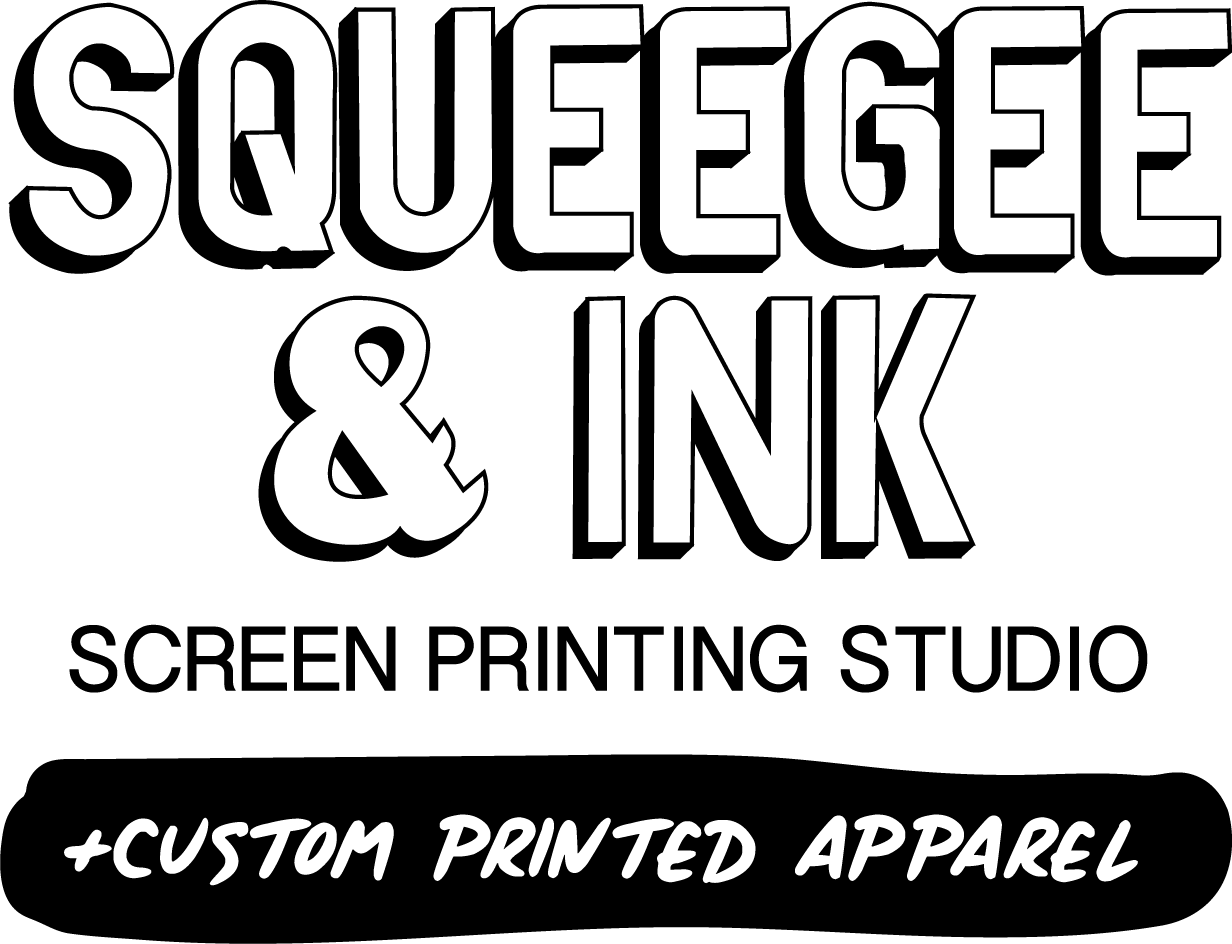EASY SCREEN PRINTING
Lets make this as simple as possible. We have broken down the whole screen printing process into 4 manageable chunks. We will be focusing on t-shirt printing specifically however if you are printing onto paper, card or flat substrates, similar rules apply. Follow this and you should be on your way to success.
DOWNLOAD MINI COURSE HERE
STEP 1 : ARTWORK PREPARATION
First things first, you need to print your artwork onto clear acetate, also known as a film positive. Your artwork needs to be 100% black ink to allow for a good exposure.
We use a wide format printer specifically adapted for printing pure black acetates. Our printer is the Epsom, Inkjet SureColor T7200.
Getting a printer like this is a pretty large outlay of cash. If you’re not ready to invest in large kit right now, no problem. We provide an acetate printing service specifically for the screen printing community.
Send us your artwork and we will print that for you!
STEP 2: COATING & EXPOSURE
Grab yourself a good quality screen and some duel cure emulsion. We advise using Screen Sol QT Emulsion by Screen Print world. Use our discount code : CRP5 for anything on their website, your going to need it!
How to know if your screen is good quality:
- Aluminium frame ✅
- High tension mesh ✅
- Clean, even mesh ✅
- Wooden frame 🚫
- Staples 🚫
- Holes in mesh 🚫

Want more information on coating screens for screen printing? Check out our FREE blog post ‘8 steps for coating the perfect screen’.
The best exposure will be achieved using an all in one Vacuum Exposure Unit. You can use budget set ups such as builders lamps however the results can vary and be hard to judge.
Professional exposure units can be pricey. The next questions is usually “Can I expose my screen with the sun?” – Well… you can give it a go.. but not on my watch! For more information on exposure units, times and everything in between, check out our FREE blog post ‘How long should I expose my screen for?’.
If you can’t splash out on a professional unit and you don’t fancy making your own budget set up. We have a service where we will expose your screens for you. Check it out here:
https://www.squeegeeandink.co.uk/product/pre-exposed-screens/
STEP 3: SCREEN PRINTING TECHNIQUE
Where do we start?! To push or to pull? Honestly, if it prints, it prints!
The best piece of advice on screen printing is to make sure you have set up your area before you start printing. Especially if you are printing with waterbased ink!! Don’t be lazy!
Here is a check list;
- Heaters on (if using plastisol ink)
- Screen registered.
- Screen taped.
- Off contact checked.
- Spray tack available.
- Is your press nice and tight? Don’t forget that platen!
- Stack of blank shirts available?
- Space for printed stock?
- Inks mixed.
- Squeegees in place.
If everything above is complete, THEN you can apply the ink to the screen.
So many people get over excited to pull their first print and start prematurely. Following that, the ink dries in the screen and everything becomes a nightmare. These are the unfortunate people who say they hate screen printing. Don’t be one of these people. We are here for you!

STEP 4: CLEAN UP AND RECLAMATION
Clean up is one of the most important parts of screen printing. It can also be pretty therapeutic if you have a good quality power washer.
If you remember anything, remember this:
- Waterbased ink cleans up with water and waterbased ink remover. (Discount code : CRP5)
- Plastisol ink cleans up with plastisol ink remover. (Discount code : CRP5)
Please do not try to clean plastisol ink with water! You WILL fail. Miserably.
When it comes to reclaiming your screen, you can do this by hand using some Emulsion Remover however we have found that using a dip tank is the quickest and most efficient way of removing your stencil.
We purchased the Dip Tank Starter kit from Screen Print World and have been using the same chemical for a solid year now. It’s still working great! Here is a link, remember you can use our discount code on this too (CRP5):
https://screenprintworld.co.uk/new-easiway-screen-printing-dip-tank-25-gallon-pt-525/

CONCULSION
I hope you have found a couple of usable tips in this blog post. If you want a more detailed introduction into screen printing, we have a brand new Mini Course available to download now.
In this mini course we cover the basics of screen printing. From artwork preparation and exposure, to printing and reclaiming your screen. You will find simple, easy to follow instructions in the form of multiple, downloadable videos. Here are the course chapters:
- Artwork preparation
- Screen coating and exposure
- Screen printing
- Clean up and reclamation






